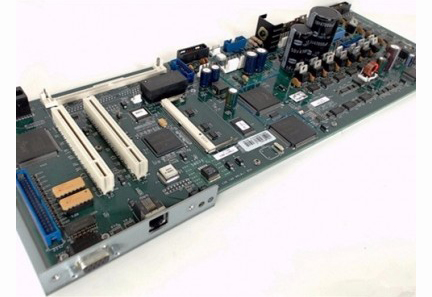Regarding the related content of SMT patch processing, many people will mix PCBA and PCB. So what is PCB? In fact, SMT is a method of integrating parts on a PCB board. What is a PCB board? In fact, PCB circuit boards are not unfamiliar to many people, that is, printed circuit boards! How did PCBA evolve? What is the difference between PCB and PCBA? How do electronic product planners find suitable PCBA suppliers to develop and produce?
PCB (Printed Circuit Board), the Chinese name is printed circuit board, also known as printed circuit board. It is an important electronic component, a support for electronic components, and a carrier for electrical connection of electronic components. PCB is called "the one of electronic products". mother". Because it is made by electronic printing, it is called a "printed" circuit board.
Before the advent of PCB, the interconnection between electronic components was done directly by wires. Nowadays, wires are only used in laboratories for test applications, and printed circuit boards must now occupy a dominant position in the electronics industry.
PCB production process:
Contact the manufacturer-opening-drilling-sinking copper-graphic handling-graphic plating-removing film-etching-green oil-character-gold-plated finger-forming-testing-final inspection
PCB unique strengths: high density, high reliability, planability, productivity, testability, assemblability, and maintainability.

2. How did PCBA evolve?
PCBA is the abbreviation of PrintedCircuitBoard+Assembly in English, which means that the empty PCB board is loaded through SMT or the entire process of DIP plug-in, referred to as PCBA.
Both SMT and DIP are methods of integrating parts on the PCB. The main difference is that SMT does not need to drill holes on the PCB. In DIP, the PIN feet of the parts need to be pierced into the holes that have been drilled.
PCBA processing
SMT surface mount skills, the first use of mounter is to mount some micro-small electronic parts on the PCB. The production process is: PCB board positioning, printing solder paste, mounter mounting, reflow oven and manufacturing Check. When SMT is integrated, it is very sensitive to the positioning and the size of the parts. In addition, the quality of the solder paste and the printing quality also play a key role.
DIP stands for "plug-in", that is, inserting parts on the PCB board, because electronic parts are large in size and not suitable for placement, or the manufacturer's production process cannot use SMT skills to integrate parts in the form of plug-ins. At present, there are two completion methods of manual plug-in and robot plug-in in the industry. The main production process is: sticking adhesive (to avoid tin plating to the place where it should not be), plug-in, inspection, wave soldering, brushing (removing in the furnace Stains left in the process) and made inspection.
Do you understand the difference between PCB and PCBA? Through the brief introduction of the above content, we can know that PCBA generally refers to a processing process, and can also be understood as a product circuit board, that is, PCBA can be counted after all the processes on the PCB board are completed. The PCB refers to an empty printed circuit board with no parts on it. In other words, CBA is a product board, and PCB is a bare board. Many people confuse PCB and PCBA. Through the above understanding of these two differences, we can know that PCBA refers to a processing process, which can also be understood as a product circuit board, that is, after the processes on the PCB board are completed. Talents count as PCBA.